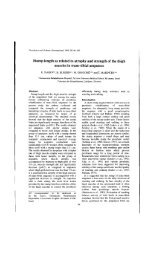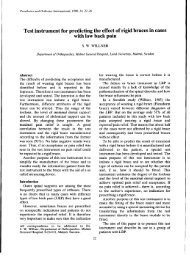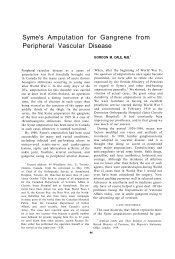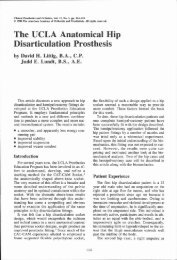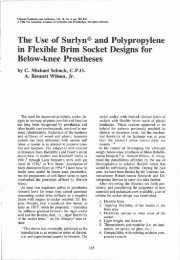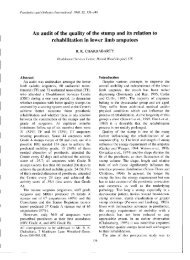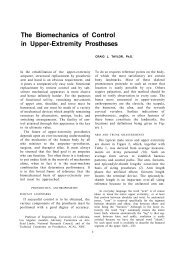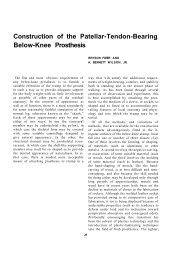Pro-Corn - O&P Library
Pro-Corn - O&P Library
Pro-Corn - O&P Library
You also want an ePaper? Increase the reach of your titles
YUMPU automatically turns print PDFs into web optimized ePapers that Google loves.
tation to the line of progression (again, the<br />
outer edge of the medial trimline is on the line<br />
of progression), and with the knee bolt axis 7°<br />
higher on the lateral side (Figure 9). Mr. Long<br />
emphasizes that it is not necessary to change<br />
the alignment. When the amputee is allowed<br />
time to adjust to the new prosthesis, then alignment<br />
changes will not be necessary.<br />
Following Gunther Gehl was Daniel Shamp,<br />
C.P.O., presenting, "The Shamp Brim, For<br />
the Narrow ML Above-Knee <strong>Pro</strong>sthetic<br />
Socket." Mr. Shamp's system of brim casting<br />
and evaluation is currently the content of a special<br />
short course offered by New York University's<br />
<strong>Pro</strong>sthetic and Orthotic Education <strong>Pro</strong>gram.<br />
Long and Sabolich, as well as UCLA, advocate<br />
that the hand casting technique is the most<br />
successful in their experience with the narrow<br />
ML, wide AP, or ischial-containment socket<br />
for above-knee amputees. In response, Mr.<br />
Shamp stated, "Experience with the Shamp<br />
Brim system has proven to make the procedure<br />
more uniformly successful and more easily<br />
Figure 9. NSNA socket shape and alignment diagram,<br />
male and female. 4 Figure 10. Centralization of the femur, as proposed<br />
by Dan Shamp for Narrow ML Socket. 5<br />
learned and applied by the practitioner who has<br />
spent years working with the brim method for<br />
quadrilateral socket casting and modification."<br />
Mr. Shamp went on to present detailed biomechanical<br />
rationale for the narrow ML socket.<br />
Biomechanical descriptions such as bony lock<br />
on the ischium, ischial containment within the<br />
socket, retention of normal adduction, etc., are<br />
consistently relevant to Mr. Shamp's socket<br />
system, as well as all of the latest ischial-containment<br />
socket designs. Two noticeably different<br />
aspects of Mr. Shamp's technique are (1)<br />
the brim forming system itself, which allows<br />
for evaluation of brim design under weight<br />
bearing conditions before proceeding with the<br />
wrap cast, and (2) what Mr. Shamp refers to as<br />
centralization of the femur. To accomplish centralization<br />
of the femur, during the casting pro-



